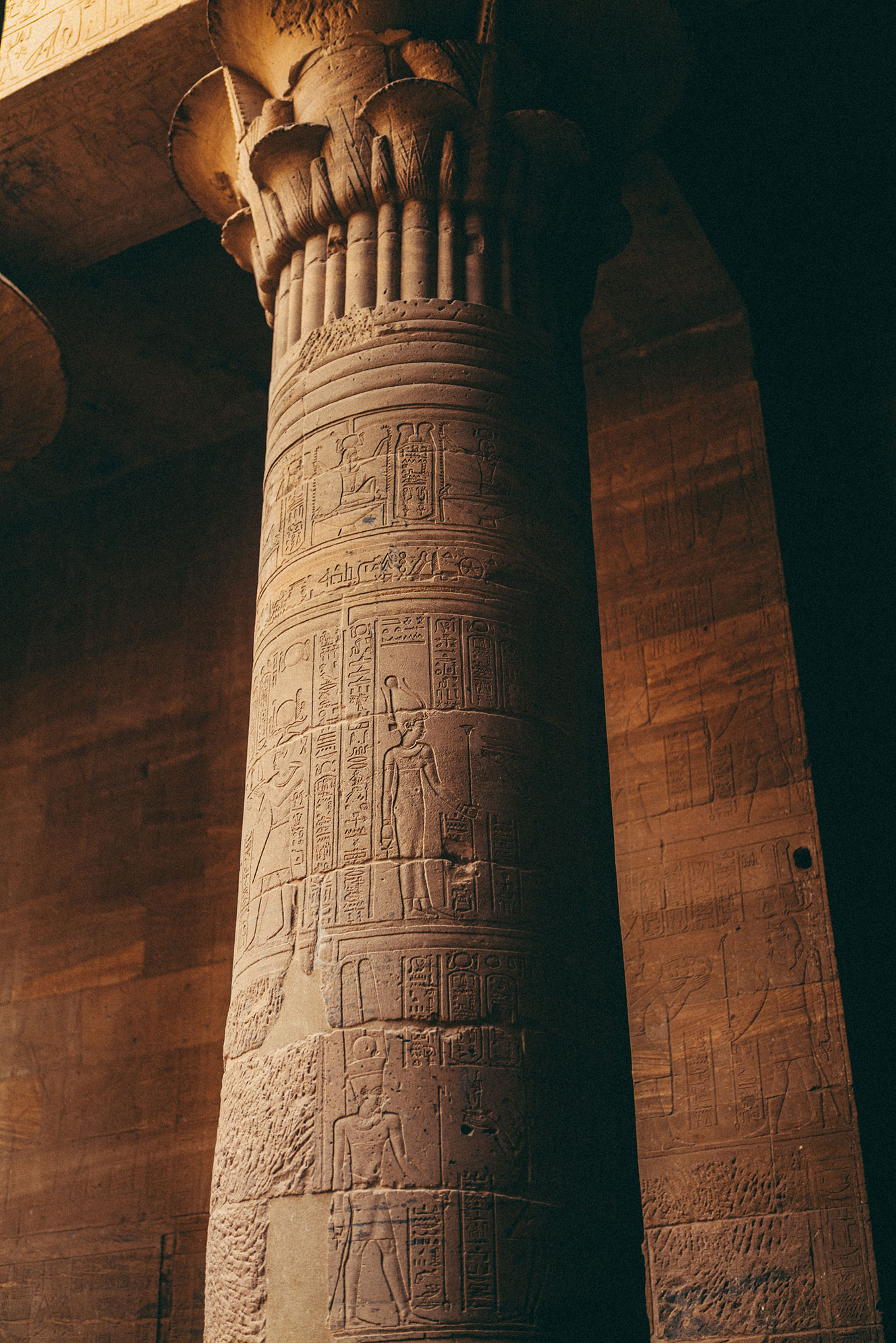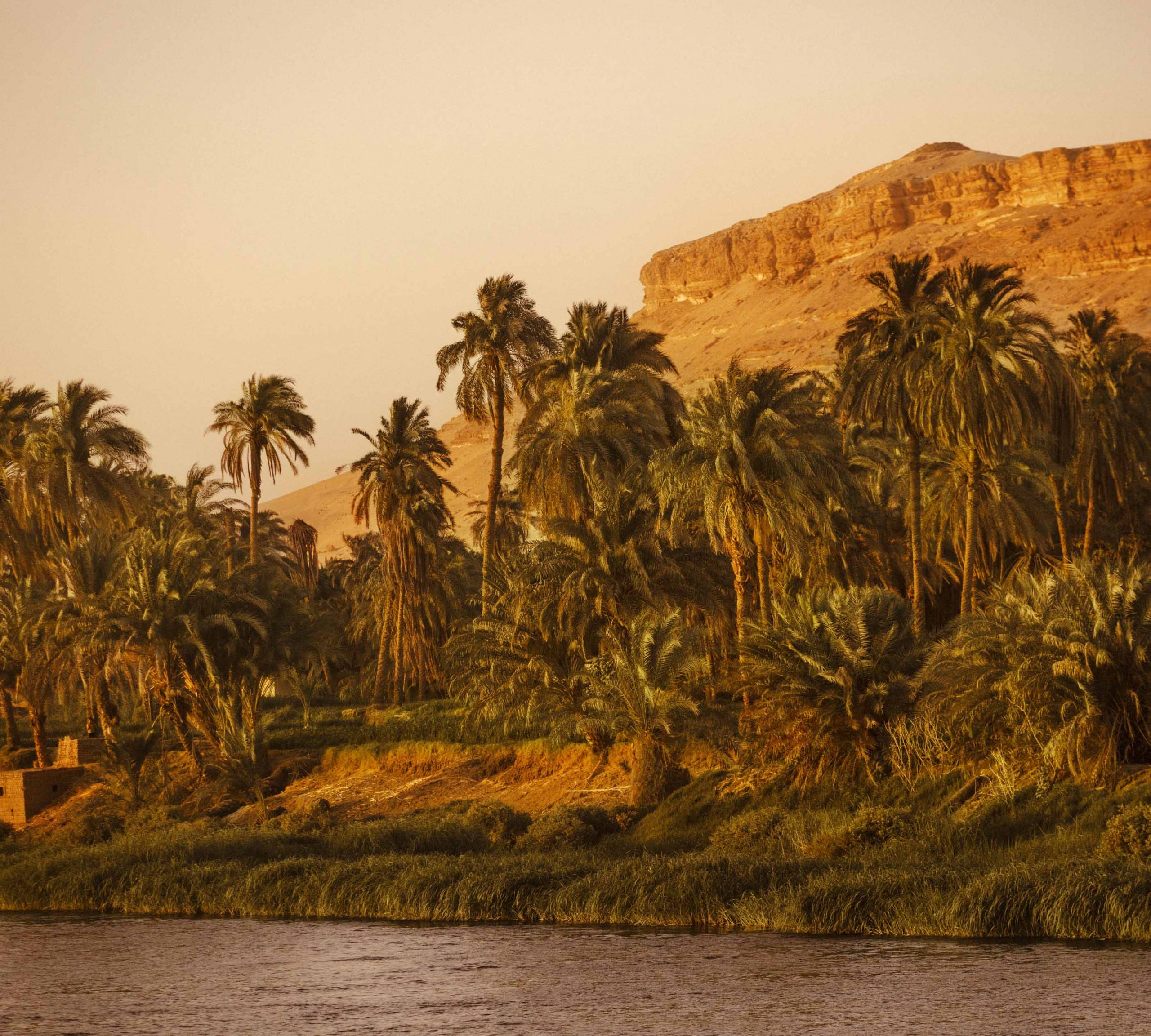The birth of tourism
BY TOM HOLLANDEgypt is where tourism began. Perhaps this is hardly surprising. By the 5th century BCE, when the first tourist guide to Egypt was written, pharaonic civilisation was already more than two and a half millennia old. In that time, many stupefying monuments had been built: pyramids, temples, obelisks. Nowhere in the world boasted such an astonishing concentration of wonders. ‘Reason enough, then,’ in the words of one particular visitor, ‘to describe it at some length.’
The visitor was a Greek. His name was Herodotus – ‘the Father of History’, according to Cicero – and the account he wrote of Egypt stands as the fountainhead of all the many guides to the country written since. He was not, of course, the first foreigner drawn to the land of the Nile. Egypt was fabulously wealthy. There were many beyond its borders who craved its gold. The oldest representation of an Egyptian king ever identified – found in a grave dating back to around 3800 – shows a tall figure wielding a mace with which he menaces three tethered captives. Century after century, millennium after millennium, it remained the abiding duty of Pharaoh to keep the borders of his kingdom proof against such barbarians. Equally – as the Bible bears witness – outsiders continued to flock to the country. ‘Behold, I have heard that there is corn in Egypt: get you down thither and buy for us from thence; that we may live, and not die.’ In times of famine, where else were supplicants like the children of Israel to go?

The fascination with Egypt: an old, old story
Herodotus, however, was a different sort of visitor. He did not come to Egypt to make a fortune or procure corn, but to admire its wonders and everything that gave the Herodotus, however, was different. When he travelled to Egypt, it was not to get rich, nor in search of corn. He came to gawp at everything that made the country distinctive, and to tour its wonders. His itinerary was one that tourists today would have no problem in recognising. He visited the Pyramids of Giza. He poked around temples and labyrinthine funerary complexes. He marvelled at the Nile. Herodotus, however, was not only interested in ancient monuments and natural wonders. He was fascinated as well by the Egyptians themselves. ‘In almost all their customs and practices,’ he reported, ‘they do the exact opposite of the rest of mankind.’ The women urinated standing up, and the men squatting down. The crocodiles wore ear-rings. The dead were mummified. Herodotus – eager to talk to everyone, fascinated by everything, just gullible enough never to be boring – remains to this day a wonderful tour guide.
The Greeks never lost their fascination with Egypt, but when Alexander the Great conquered Egypt in 331 BCE and founded a new capital, he placed the city on the coast. Situated between the desert and the sea, Alexandria had statues of Apollo and Athena rubbing shoulders with animal-headed gods in the streets. It was a city of superlatives, celebrated across the Mediterranean for its library and its lighthouse, its spectacular palaces and its money-making devices. Even the Romans – who, as a general rule, despised anything that was not Roman – yearned to visit it. “Yes,” the great orator Cicero admitted, “I have dreamed for a very long time of visiting Alexandria.”
The luxury cruise of Caesar and Cleopatra.
When Egypt was absorbed into the Roman Empire, in 30 BCE, Rome was seized with a fascination for all things Egyptian. However, tourism was severely restricted. Rich, fertile Egypt was the private, and absolutely exclusive, preserve of the Roman emperors and their families. Senators were prohibited from setting foot there. The risk that one of them might use it as a base for an insurrection was held to be too great. It was Julius Caesar, arriving as a conqueror in Alexandria in 30 BCE, who started the trend. The Roman general and the Egyptian queen, Cleopatra, with whom he had fallen in love, voyaged together on the Nile in a luxury cruise. According to one biographer, “If his army had not refused to accompany him, he would have gone all the way to Ethiopia with her.” Following Caesar’s example, many emperors went on a similar trip on the Nile. Their principal destination was Luxor and the gigantic statue of a seated man. At the time, it was considered the greatest tourist attraction in all Egypt. Although it actually represented Amenhotep III, the grandfather of Tutankhamun, the Roman visitors believed that it portrayed an ancient hero named Memnon, an Ethiopian who had fought in the Trojan War and was the son of Eos (the Dawn). They thought this identification was proved by a miraculous phenomenon: sometimes, at sunrise in early spring, the pedestal of the statue would begin to sing, or rather to hum. The sound, according to one travel writer, resembled that of the vibrating string of a lyre. The poetess Julia Balbilla, who accompanied the Emperor Hadrian to Luxor in 130 CE, was said to have heard Memnon sing: “Memnon’s voice resonates like sounding brass, high pitched.” Four of her poems were chiselled onto the side of the statue. Carved with great skill and precision, this was graffiti intended to last.

And pilgrims replaced the tourists.
But at the end of the second century, the song of Memnon had faded and vanished forever. Much more was to fade and vanish as well. Egypt in the time of Hadrian bore witness to continuities – of worship, of culture, of language – that reached back over 3,000 years. But the advent of Christianity, and then of Islam, brought this fabulously long chapter to an end. The temples were given over to sand; the customs that had so intrigued Herodotus abandoned; the meaning of the hieroglyphics forgotten. The tourists who had visited the monuments of the pharaohs were replaced by a new kind of traveller: pilgrims. Alexandria, once the intellectual powerhouse of paganism, was reconsecrated as something new: as ‘the most glorious and Christ-loving city of the Alexandrians.’ Monks took to the desert, where their prodigies of asceticism proved an irresistible draw to the devout. A monastery was established at the foot of Mount Sinai. Then, with the conquest of Egypt by the Arabs in 642, new pages were written in the history of the country. New destinations, new landmarks and new objects of pilgrimage came into being. By the year 1000, Egypt had become a true force of Islamic civilisation, with superb mosques, exquisite calligraphy and a completely new capital, Cairo, as breathtaking as it was powerful. Indeed, its great university, Al Azhar, founded in 972, remains the most famous and influential in the Islamic world to this day.
Meanwhile, the shadow of ancient Egypt lived on, looming on the edges of the Christian and Muslim imagination. The figure of the pharaoh became the archetype of idolatry, in both the Bible and the Koran. In the minds of the faithful, the monuments to his glory tended to be regarded at best with lack of interest, at worst with fear. Even so, visitors to Cairo could not fail to be moved by the pyramids, and many pilgrims thronged the city to wonder at them.
For a long time, Christians had identified them as grain stores built by Joseph; but in the 16th century, as the fascination of Antiquity among Renaissance scholars intensified, Italians began to visit Egypt, not as pilgrims, but as tourists. In 1589, a Venetian travelled as far as Luxor “for no other reason than to see superb buildings, churches, huge statues, obelisks and columns all in one place,” as he explained.

More and more Europeans followed in his footsteps over the next few centuries. The best-known expedition, and by far the most influential, was that of Napoleon in 1798. “Soldiers, keep in mind that from the summits of these pyramids, 40 centuries of history are watching you!” he declared before the Battle of the Pyramids, the great victory that won France temporary control of Egypt. But Napoleon the conqueror was a tourist, too. Among his baggage he had a copy of Herodotus’s description, and in his retinue, a veritable army of scholars. As they travelled through Egypt, these learned men compiled the first major modern study of the country’s antiquities. Its impact across Europe was sensational. And in 1828, when the linguist Jean-François Champollion disembarked in Alexandria, he did so in his role as the man who, over the previous decade, had deciphered the hieroglyphics. Travelling up the Nile, he was the first tourist since Roman times capable of reading the inscriptions on the ancient monuments.
Steamers, armies of interpreters and guides: a new way of travelling
Academics were not the only ones infected with Egyptomania. In 1869, on the inauguration of the Suez Canal, Thomas Cook was on the scene, an English entrepreneur and a pioneer of tourism, who was among the first to offer trips for the emerging middle classes. Backed by an impecunious Egyptian government totally dependent on Great Britain for its survival, he set up a whole infrastructure, hired steam boats to churn up and down the Nile and employed armies of interpreters and guides. In 1884, at the request of the British government, the Thomas Cook agency even organised transport for the expeditionary force from Alexandria to the Sudan, in the vain hope of saving General Gordon, in Khartoum. At the turn of the 20th century, the tourist industry was such that Egypt was firmly established as the preferred winter destination of wealthy Westerners.
These travellers, on board a steamer or in a luxury hotel, found all the comfort that they were accustomed to in their homes. They could also devote themselves to new pastimes. When Lord Carnarvon, who had been advised by his doctors to spend the winter in Egypt after a serious motor accident, found himself on the banks of the Nile, he rapidly became obsessed by archaeology.
In 1922, the discovery of the tomb of Tutankhamun by Howard Carter, whose patron he was, unleashed a fresh wave of Egyptomania. It has never faded since.
A hundred years later, the fascination exercised by Egypt remains intact. It is still one of the world’s favourite tourist destinations. The Covid-19 crisis was a testing time for all, but the Egyptian government did not remain idle: a spectacular new museum, the Grand Egyptian Museum (GEM), housing the funeral treasures of Tutankhamun, the royal mummies and a wide selection of archaeological objects held by all the world’s museums, is opening at Giza. Today, Egypt does as she has always done, and confirms the truth of Herodotus’s assessment: “It is a land which boasts an inordinate number of wonders and possesses more monuments surpassing description than any other.”
Credits
© IFAO © Thomas Cook Archives



